The Australian group of companies to be used for this financial reporting disclosures exercise, include the Virgin Blue Holdings Company, and the Westfield Insurance. The Virgin Blue Holdings Company is the umbrella company, which owns and runs the Virgin Australia Company. The Pacific Blue Airlines and the Virgin Blue Holdings Company, came together and ventured into Polynesia Blue. In 2011, they were absorbed by the Virgin Australia. The parent company of the Virgin Blue Holdings Company, is the Virgin Group. The Virgin Group of Companies is also the major shareholder at the Virgin Blue Holdings Company.
The head office of the Virgin Blue Holdings Company is located at the Bowen Hills area in Australia. The Westfield Insurance is the major subsidiary of the Westfield Group, and is a business property and liability insurance dealer. The Westfield Insurance Company has several subsidiary companies, which include the Westfield Group Country Club, the Blair Centre, and the 36 Hole Challenge Golf Course, which hosted iconic championships like the Junior PGA contest. The company also owns the Westfield Bank, a recently refurbished private hotel, and the Westfield Inn. The insurance companies operating under the Westfield Insurance Company include, the Ohio Farmers Insurance Company, Westfield National Insurance Company, American Select Insurance Company, and the Old Guard Insurance Company.
From the analysis of the June 2011 annual report of Westfield Insurance, the following information was obtained. After deducting the value of the liabilities from the total value of the assets of the company, the remaining figure represented the capital stock of the company. The company in this case, used the average profits method, under which the good will of an enterprise is computed from the average of the agreed number of years.
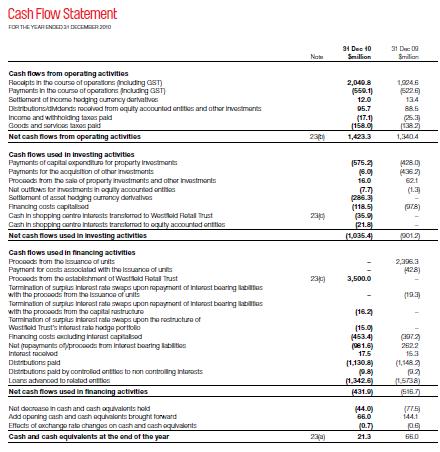
The computation formula in this case is:
Goodwill = Average profits realised X the number of years for purchase
In the current case, before the computation of average profits of Westfield Insurance Company, the adjustments named below were made to the financial records of the company. The incidences of any abnormal profits, were subtracted from the net profit projections of the year 2011. The abnormal losses incurred by the business, were further added to the net profit realizations of the year, and the non-operating revenues, for instance, the income from ventures among others, were reduced from the net profit amounts of the year 2011. The figures for the computation included USD 3 Billion from the investment portfolio accrued, net catastrophe losses of USD 150 Million, and a 4.4% growth in direct premiums (Alexander & Britton, 2004).
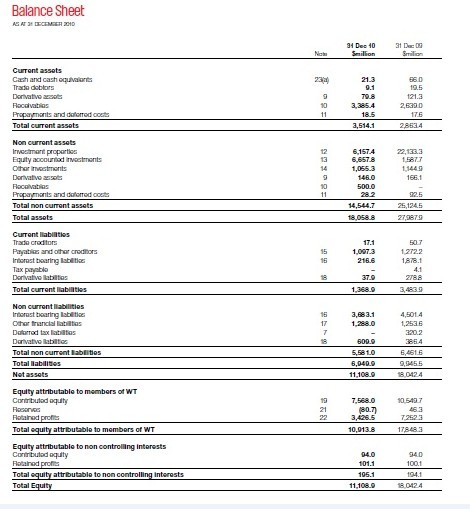
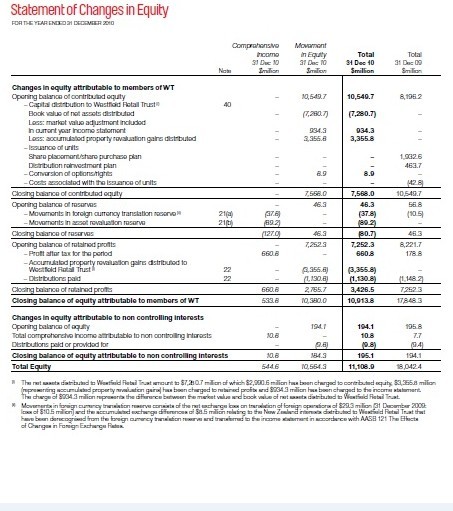
In the case of the Virgin Blue Holdings Company, from the company’s 31st Dec 2010 annual report, the following conclusions were drawn. The goodwill of the company was computed, on the basis of super profits. Under the goodwill calculation method used, there is excess of the actual proceeds, over the average realized profits. For instance, in the case where the regular rate of return from a particular enterprise is 20%, and the investment amount in the business is USD 100,000, then the regular profit amount will be 20,000. However, in the case where the enterprise accumulated a net profit amount of USD 23,000, then, USD 3,000 will be the super profits. In the current case, the goodwill of Virgin Blue Holdings Company will be computed from multiplying the super profits of the company by the sum of the years of purchase (Gibson, 2010). From the derivations drawn, the goodwill calculation model of the Virgin Blue Holdings Company will involve the following:
- Normal profits = resources invested X regular rate of return/ 100
- Super profits = actual profits – normal profits
- Goodwill = super profits x sum of years purchased
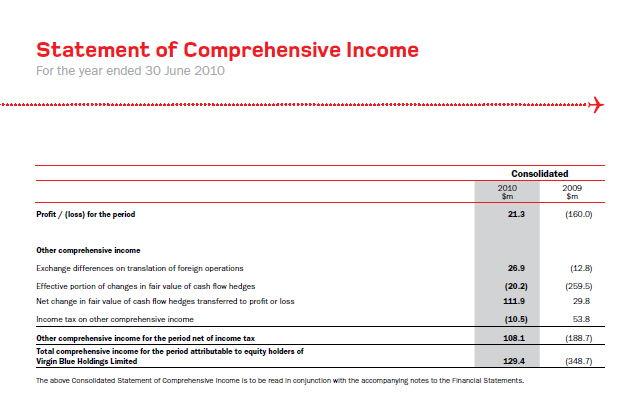
The figures to be employed during the computation, include the net profit figures of USD 21,300,000 realized 12 months before 30th June, 2010; the accounts payable, like that to KPMG Australia of 934,162, and 420,023 for services, excluding statutory audit. To be incorporated also, are the revenues and incomes, which are standing at USD 2,976 in 2010. As the case is, with the good will calculation of the Virgin Blue Holdings Company, their earning power is first determined, and then the book valuation of the company’s assets is then adjusted to the capitalization.
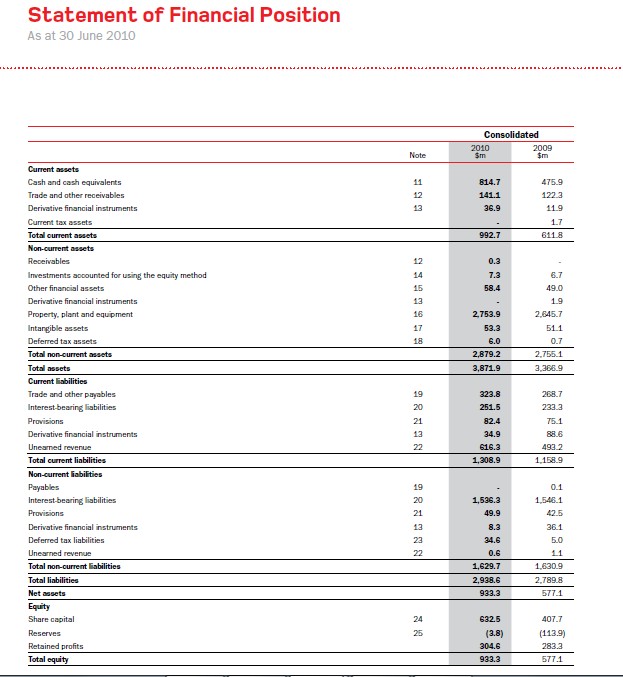
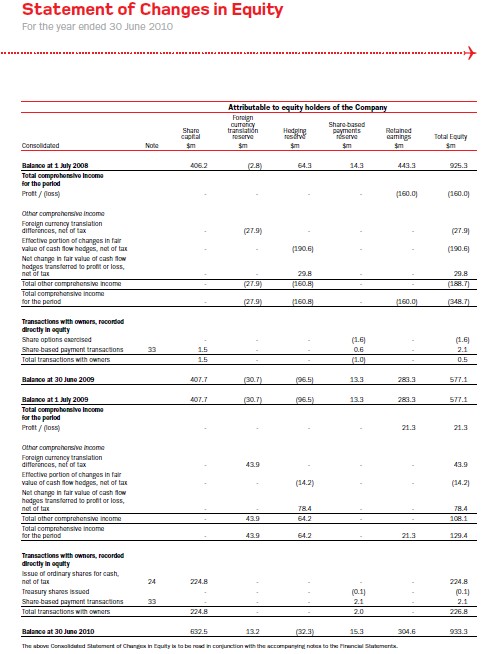
From the annual report of Westfield Insurance, the presented information indicated that the company worked on the basis of the acquisition date, which was evaluated as a residual. Here, the goodwill was determined as an excess of the consideration, offered to Westfield Insurance, adding the fair value of non-controlling proceeds in the subsidiary, divided by the fair values of the accounted acquired assets (Higson, 2003).
The Virgin Blue Holdings Company on the other hand, evaluated the gain on bargain purchased, by considering the acquired goodwill as a residual. This was the approach, as it allows for the improvement of the way in which Virgin Blue Holdings Company, is commitment to make payments, on the returns from future ventures. This is often referred to as contingent consideration. These contingent aspects are what were identified and measured, and in return, improving the measure of the goodwill (Mard, 2002). The revaluation of the assets of the subsidiary companies operating under Westfield Insurance, were computed in the manner described below. Only the share of the assets and the liabilities of Westfield Insurance, were revalued. In this case, the non-controlling interest’s shares, were considered on their book value.
The revaluation of the assets of the subsidiary units of the Virgin Blue Holdings Company on the other hand, were computed on a full evaluation scale, where the assets and the liabilities were revalued, at the value they hold within the market, as at the acquisition date. This computation was done, in line with the economic unit concept. This is evident from the consideration given to the interest in the common stock of the subsidiary companies, the subsidiary company’s overall assets, and the amortization done over the perceived useful life, to come up with the book value of the subsidiary’s net assets. This was the treatment given to the calculation of the net value of the Virgin Australia Company, which is the Company’s subsidiary (Rasmussen, 2003).
In the case of Westfield Insurance, the impairment of goodwill is tested by first, identifying the fair value of the reporting companies, with the amount given as its carrying amount, including the goodwill. In its case, some returned accounts showed that the fair value of the units, were greater than the real carrying values of the company. This meant that impairment was detected, and that was resolved through computing the goodwill on a residual basis, where the sum of the fair values of the varied asset categories, both tangible and intangible, from the indicated fair value of the reporting company, was considered. In the case of Virgin Blue Holdings, a comparison of the fair value of the reporting companies with the carrying amounts, this including the goodwill, was made.
In the case of Westfield Insurance, minority interest calculation and disclosure were done on the basis of the change in ownership interests, which do not result into losses. In the case where the subsidiary resulted into losses of control and deconsolidation, triggering loss or gain, would lead to the establishment of a new fair value amount in the area of new ownerships interests. The case of Virgin Blue Holdings Company on the other hand, was done on the basis of considering the economic unit, the parent company, and the proportional grounds. Major consideration was also given to the components of the consolidation process, towards drawing out the consolidation outcomes.
From the financial records of Westfield Insurance, with regard to the accounting method and/or disclosure followed, its computations were consistent with the requirements of the ASS 127, and not those of the AASB 3. This was the case, as consideration was given to the provisions, contingent assets and the contingent liabilities of the company, during the computation of the disclosure accountability. The Virgin Blue Holdings Company on the other hand, did its computation, on the basis of the AASB 127, giving full consideration to the figures of the provisions included, the contingent liabilities and the contingent assets of the parent company, as well as the subsidiary units.
The major difference that can be traced from the disclosure management of Westfield Insurance and the Virgin Blue Holdings Company, can be enumerated as below. The Westfield Insurance used the average profits method in computing the goodwill, while the Virgin Blue Holdings Company used the super profits method of computation. On the area of gain on bargain calculation, Westfield compiled this figure as a residual, while the Virgin Blue Holdings Company used the acquired goodwill of the subsidiaries as a residual. The two companies were also fundamentally different in the area of the revaluation of the assets, and during the testing of the cases of goodwill impairment. In the area of the disclosure method used, it was established that both companies worked with the requirements of the AASB 127 standard, and not the AASB.
References
Alexander, D., & Britton, A. (2004). Financial reporting. London: Cengage Learning EMEA.
Gibson, C.H. (2010). Financial reporting & analysis: using financial accounting information. London: Cengage Learning.
Higson, A. (2003). Corporate financial reporting: theory and practice. London: Sage.
Mard, M.J. (2002). Valuation for financial reporting. New York: John Wiley and Sons.
Rasmussen, N. (2003). Process improvement for effective budgeting and financial reporting. New York: John Wiley and Sons.
